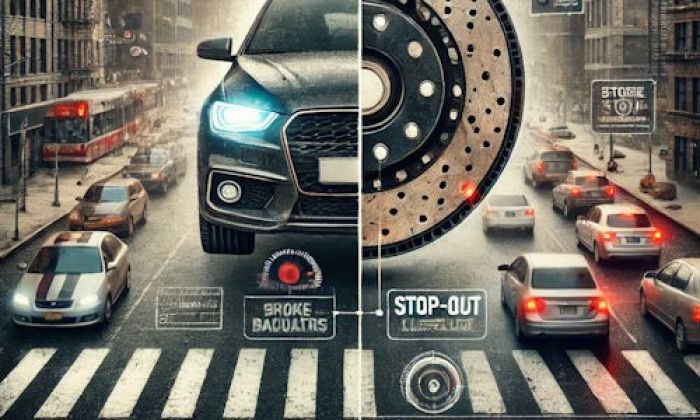A high-voltage spark from an ignition coil is required to ignite the fuel and begin the combustion process, allowing the engine to turn over. Unfortunately, even seemingly minor issues, like corroded wiring or a dead battery, might render it difficult to do this.
Voltage problems highlights
- Level of urgency:high
- DIY inspection:possible but complicated
- DIY repair:impossible
- Can you drive?yes
- Price for repairs:$150 - $350
- Symptoms:anomalies with electrical equipment, dimming or flickering lights
- Ways to solve:use multimeter to test various equipment and find the source of voltage issues

What Usually Goes Wrong When There's 12 V on the Coil but No Spark?
The following issues may arise when 12 Volts come to the coil, but there's no spark:
- Power
The positive main post of the ignition coil receives electricity from the ignition switch through two connections. With the key in the "start" position, the starter will turn over the engine, and the coil will get the full voltage from the battery. After the engine has started, the switch goes into the "run" position.
Even if the coil gets electricity, its voltage could diminish if a resistor is present in the "run" circuit. Each is necessary for a reliable power source. Check the battery, starter, and related wiring to see if the primary voltage to the coil is low or nonexistent.
- Signal
A secondary spark cannot be generated by the ignition coil windings unless there is an external signal applied to the main negative post of the coil. A signal, such as a switch, breaks the link. The coil windings produce the voltage. Each spark represents a voltage decrease caused by the interruption.
Modern ignition systems "detect" the need for a spark through a hall-effect switch or crankshaft position sensor instead of interrupting the circuit via breaker points. Next, the ignition module analyzes the data, using the information to time the production of sparks. Look at these parts and check whether the electrified coil is damaged.
- Flow
The secondary voltage from an ignition coil is often relatively high. Therefore, any engine that ordinarily needs a secondary coil wire may be started and operated with the same length of vacuum hose. Even if a spark travels through the hollow tube to the distributor cap, the engine will stall under any load because the spark is so weak.
However, if there is a sizable hole or a great deal of corrosion, the coil will not spark. Secondary spark conductors must have entire circuits with correct connections and insulation to provide a constant flow of electricity.
- Broken Connections
An open circuit occurs when a conductor, such as a wire, is severed. An open circuit acts just like a disconnected one. Ignition coils are vulnerable to forming open circuits because their windings are simply a bundle of wires. If there are any breaks in the windings of a coil, an ohmmeter measurement might point them out. Open circuits result from corrosion at connections. Therefore, when diagnosing a "no spark" problem, it is essential to rule out any possibility of an open circuit, including faulty ground connections.
How to Troubleshoot a 12 Volt Coil Where There Is No Spark?
If your engine cranks over but won't fire, the problem is likely with the ignition system. But there might be a lot of other causes of the problem.
To help you diagnose and repair your 12 Volts to coil but no spark issue, we've compiled a list of the six most common causes and solutions.
- A rusty or dirty distributor cap.
You should check the distributor cap as a first step.
Lift the lid and look for signs of wear and tear on the interior and exterior. In addition to the absence of corrosion and decay, the firing points should also be free of surface erosion.
Check that the rotor, rotor arm, and rotor button are in excellent functioning condition while you're at it. Misfiring may arise from a loose terminal connection on the distributor cap or a rotor too short for the coil. Make sure the rotor's working correctly by inspecting each component.
The distributor condenser might be at blame in yet another circumstance.
- Crankshaft Position Sensor Failure
The crankshaft position sensor tracks where the crankshaft is and how fast it's spinning.
Without a crank sensor, the engine control module (ECM) would have no way of knowing when to fire the engine's fuel injectors and spark plugs.
When the crank sensor becomes unreliable, it prevents the ECM from receiving accurate information. Because of this, the engine won't turn over if the crank position sensor malfunctions. Much more concerning is the possibility that it will cause the engine to stall regardless of speed.
To begin, check for a wire from the ECM that might have gotten corroded, frayed, or otherwise damaged. Injectors can release fuel once the ECM receives signals from the crank position sensor.
- Faulty Ignition Control Module
The ignition control module's job is to instruct the ignition coil to produce the high voltage that will ignite the spark plugs.
There might be intermittent engine failure if the ignition control module in your automobile is malfunctioning. Failure of the ignition control module will result in a weak spark and an inability to start the vehicle.
If the spark plug wires are damaged or broken, you should repair them and inspect the switch and terminals for corrosion.
Another potential culprit is a broken ignition module.
Letting the automobile run at an idle speed for 30 minutes and then tapping the ignition module with a screwdriver is one straightforward approach to checking its functionality. If your car suddenly dies, the problem might be with the ignition module.
- Issues with the distributor's pickup coil
The distributor houses the electrical ignition pickup coil to acquire the spark that ignites the fuel/air combination and gets the engine started. As a result, you may have trouble starting your car if there is an issue with your truck.
A stalled engine might result from a signal sent by a worn or damaged pickup. You can get the car moving again, but it depends on how worn the pickup coil is.
Please verify that the ballast resistor is working as it should while inspecting the distributor. When installed in an ignition system, the ballast resistor helps prevent further damage by maintaining a steady electrical current.
- An issue with the ignition coil
An ignition coil sends a high-voltage pulse to the spark plugs, igniting the fuel-air mixture.
An engine that abruptly quits after running for a while is a symptom of a defective ignition coil. The ignition coil often overheats due to insufficient heat dissipation or excessive current flow from a faulty component.
Cracks, burns, melting, or leaking indicate a failing ignition in an older canister coil. Having them means that the coils need to be changed.
Also, examine each wire separately to ensure there aren't any weak connections at the spark plug cap. The spark plug cover will prevent electricity from escaping, but a wire might still be severed by excessive heat or wear and tear.
Use a spark tester or a digital multimeter with the ohms setting to quickly and accurately check your spark plug wires. Verifying the integrity of each spark plug wire might save you from having to deal with a more severe ignition issue.
The car's other components may be OK; the issue is only the switch that turns the engine on and off.
If twisting the key does not activate the car's lights and other functions, the problem might lie with the ignition switch.
Tips for Swapping Out the Power Supply's Distribution Unit
The distributor was an essential component of older models' ignition systems. Its primary function is to ignite the spark plugs, as the name implies.
The ignition coil connects to the distributor cap through the coil wire. After that, the current travels to the distributor rotor.
When the rotor and distributor shaft start turning, electricity is sent to each cap's outside terminals, setting it in motion.
A separate spark plug wire connects each spark plug to the outside terminals of the distributor. Thus, the air/fuel combination in the combustion chamber is set ablaze by the spark plug.
Each spark plug in a contemporary car's direct-ignition system sits atop a coil cluster.
About the authors
The CarAraC research team is composed of seasoned auto mechanics and automotive industry professionals, including individuals with advanced degrees and certifications in their field. Our team members boast prestigious credentials, reflecting their extensive knowledge and skills. These qualifications include: IMI: Institute of the Motor Industry, ASE-Certified Master Automobile Technicians; Coventry University, Graduate of MA in Automotive Journalism; Politecnico di Torino, Italy, MS Automotive Engineering; Ss. Cyril and Methodius University in Skopje, Mechanical University in Skopje; TOC Automotive College; DHA Suffa University, Department of Mechanical Engineering






Add comment